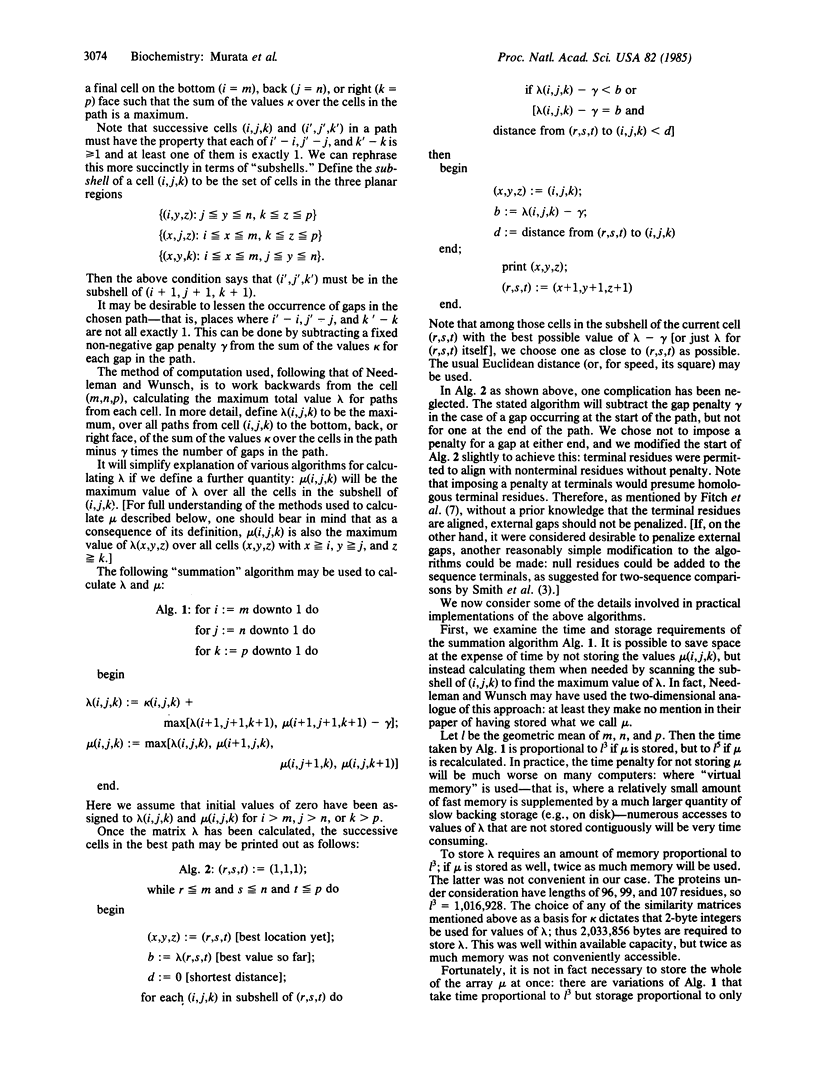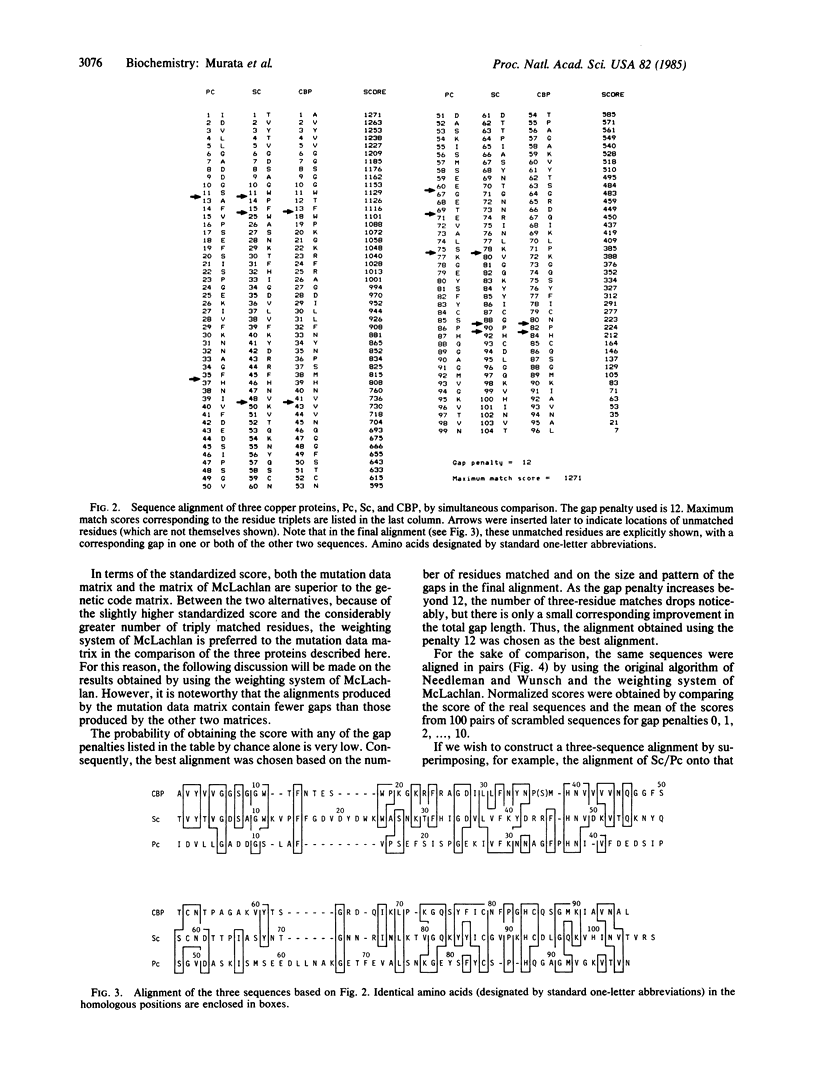Abstract
Currently there are several computer algorithms available for aligning two biological sequences. When more than two sequences are to be aligned, however, pairwise comparisons using these methods rarely lead to a consistent alignment of the sequences. One obvious solution to this problem is to compare all the sequences simultaneously. Here we present an algorithm for the simultaneous comparison of three biological sequences. The algorithm is an extension of the method developed by S. B. Needleman and C. D. Wunsch, but it decreases the almost prohibitively long computing time required by a direct naive extension to a practical level: it takes time proportional to the cube of the mean sequence length, in comparison to the fifth power time taken by the direct extension. Simultaneous comparison not only gives a consistent alignment of the three sequences, but it could also reveal homologous residues in the sequences that might be overlooked by the pairwise comparisons. As an example of the application of the algorithm, three copper-containing proteins, plastocyanin, stellacyanin, and cucumber basic blue protein, are compared.
Full text
PDF




Selected References
These references are in PubMed. This may not be the complete list of references from this article.
- Bergaman C., Gandvik E. K., Nyman P. O., Strid L. The amino acid sequence of Stellacyanin from the lacquer tree. Biochem Biophys Res Commun. 1977 Aug 8;77(3):1052–1059. doi: 10.1016/s0006-291x(77)80084-3. [DOI] [PubMed] [Google Scholar]
- Doolittle R. F. Similar amino acid sequences: chance or common ancestry? Science. 1981 Oct 9;214(4517):149–159. doi: 10.1126/science.7280687. [DOI] [PubMed] [Google Scholar]
- Fitch W. M., Smith T. F. Optimal sequence alignments. Proc Natl Acad Sci U S A. 1983 Mar;80(5):1382–1386. doi: 10.1073/pnas.80.5.1382. [DOI] [PMC free article] [PubMed] [Google Scholar]
- McLachlan A. D. Tests for comparing related amino-acid sequences. Cytochrome c and cytochrome c 551 . J Mol Biol. 1971 Oct 28;61(2):409–424. doi: 10.1016/0022-2836(71)90390-1. [DOI] [PubMed] [Google Scholar]
- Murata M., Begg G. S., Lambrou F., Leslie B., Simpson R. J., Freeman H. C., Morgan F. J. Amino acid sequence of a basic blue protein from cucumber seedlings. Proc Natl Acad Sci U S A. 1982 Nov;79(21):6434–6437. doi: 10.1073/pnas.79.21.6434. [DOI] [PMC free article] [PubMed] [Google Scholar]
- Needleman S. B., Wunsch C. D. A general method applicable to the search for similarities in the amino acid sequence of two proteins. J Mol Biol. 1970 Mar;48(3):443–453. doi: 10.1016/0022-2836(70)90057-4. [DOI] [PubMed] [Google Scholar]
- Ryden L., Lundgren J. O. On the evolution of blue proteins. Biochimie. 1979;61(7):781–790. doi: 10.1016/s0300-9084(79)80272-2. [DOI] [PubMed] [Google Scholar]
- Smith T. F., Waterman M. S., Fitch W. M. Comparative biosequence metrics. J Mol Evol. 1981;18(1):38–46. doi: 10.1007/BF01733210. [DOI] [PubMed] [Google Scholar]


